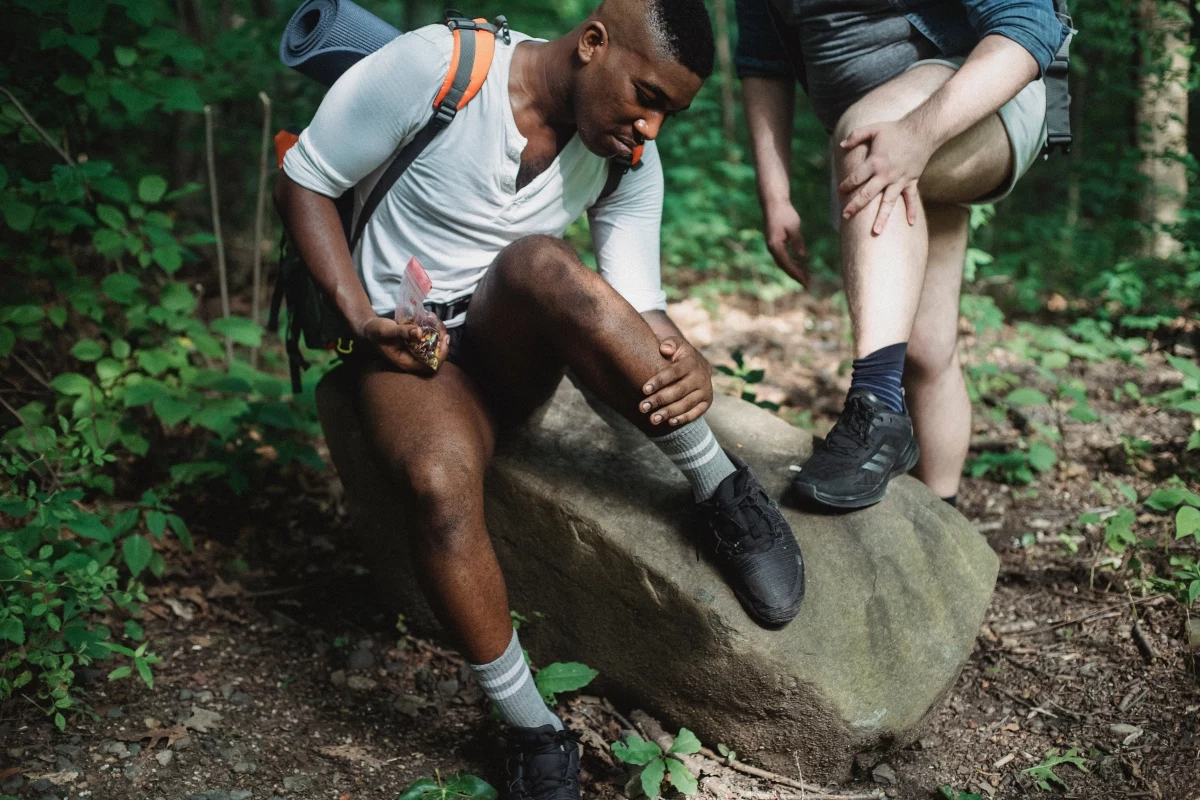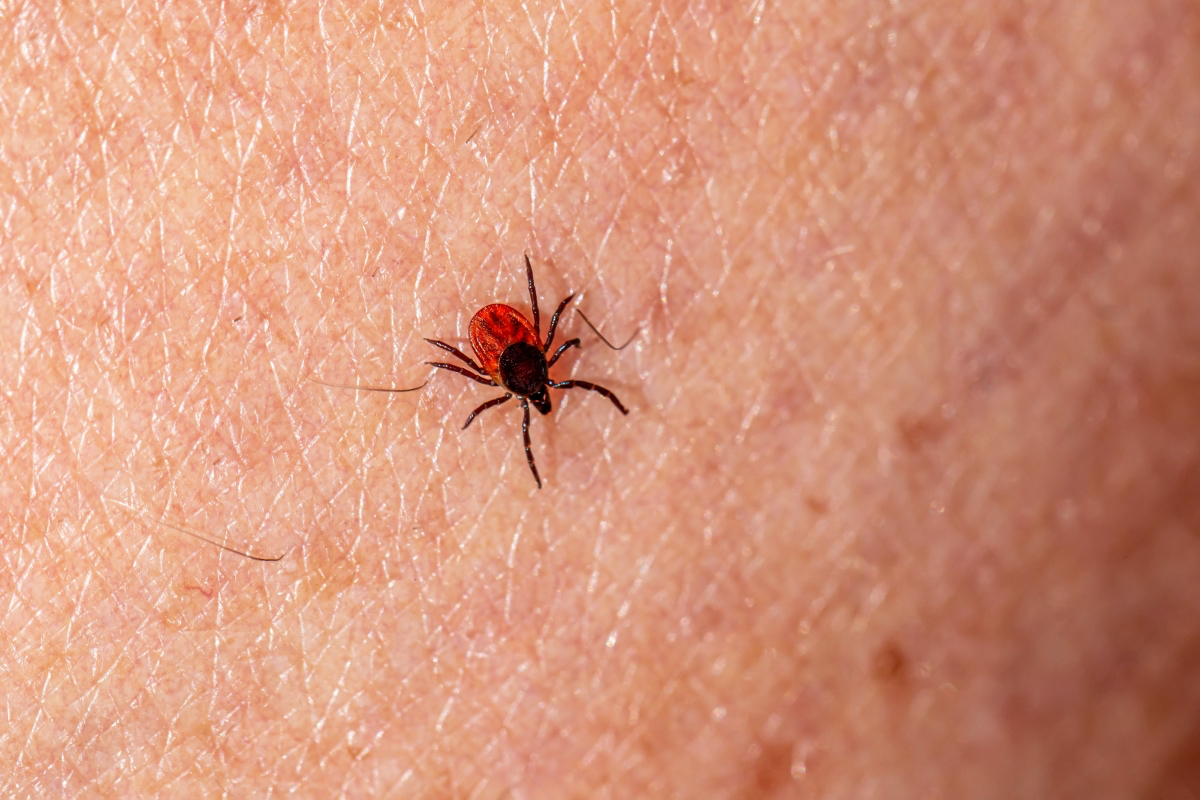My Field-Tested System for Preventing Tick Bites
I’ve spent the better part of two decades guiding hikes and teaching people how to be comfortable and safe in the wild. For a long time, I honestly thought of ticks as just another bug—a minor pest you’d flick off your pants and forget about. That all changed on a trip deep in the New England woods.
In this article
One of the apprentices I was training got really sick a few weeks after we got back. It turned out to be Lyme disease. Thankfully, he made a full recovery, but it was a serious wake-up call for me. It drove home the point that keeping ticks off you isn’t just about avoiding an itchy bite; it’s a critical outdoor skill.
Since then, I’ve perfected a system. It’s not built on fear, but on a healthy respect for these incredibly efficient little creatures. It’s a mix of understanding their behavior and using practical, field-tested methods to stop them in their tracks. This is what I teach everyone I take out, and it’s what I’m going to share with you. The goal is to get you out there enjoying nature with confidence, not anxiety.

First, Understand Your Adversary
Before you can stop a tick, you’ve got to think like a tick. They aren’t insects, by the way. They’re arachnids (yep, related to spiders!), which helps explain their patient, deliberate hunting style. Ticks don’t fly, and they don’t jump. They wait.
They go through a few life stages, but the one you really need to worry about is the nymph. A nymph is only about the size of a poppy seed, making it incredibly hard to see. Public health experts agree that these tiny nymphs are responsible for spreading the majority of tick-borne illnesses, simply because they go unnoticed. They’re most active in the spring and summer, right when we are.
Adult ticks, which are closer to the size of a sesame seed, are much easier to spot and remove before they cause a problem.
So how do they find you? They use a method called “questing.” It’s not as grand as it sounds. A tick just climbs to the tip of a blade of grass or a leaf, holds on with its back legs, and stretches its front legs out, waiting for a warm-blooded animal (like you) to brush past. They can sense your body heat, the carbon dioxide you breathe out, and even the vibrations of your footsteps. When your leg brushes that blade of grass, they just grab on. This is why you almost always find ticks starting low on your body—they climb up from the ground, not drop down from trees.

The Transmission Timeline: Why Every Minute Counts
Here’s some good news. A tick usually doesn’t transmit disease the second it bites. For something like Lyme disease, most experts say the tick needs to be attached for 36 to 48 hours. The nasty bacteria has to travel from the tick’s gut to its salivary glands, and that process takes time. This window is your golden opportunity to find and remove it safely.
But don’t get too comfortable. Some other diseases, though rarer, can be transmitted much faster—some in as little as 15 minutes. This is why preventing the bite in the first place is always the best strategy.
Layer 1: Your Clothing is Your Armor
The absolute easiest way to stop a tick is to never let it touch your skin. This all comes down to dressing smart.
First, wear light-colored clothing. It sounds simple, but it makes spotting a dark, crawling tick a thousand times easier. I make it a habit to glance down at my pants every 20 minutes or so when I’m in a tick-heavy area. It takes two seconds and can save you a world of trouble.

Your clothing should also form a sealed system. A tick’s goal is to crawl upward until it finds an opening to your skin. Your job is to close all the entry points.
- Long pants, long sleeves. This is a must, even on warm days.
- Tuck your pants into your socks. Yes, you will look like a total dork. But it’s the gold standard for a reason—it creates a physical dead-end for a climbing tick.
- Tuck your shirt into your pants. This closes off another major access point. A belt helps keep it sealed.
- Wear a hat. If you’re pushing through brush, your head can easily come into contact with a questing tick. A hat is a simple barrier.
Layer 2: The Right Repellents (and How to Use Them)
Okay, so you’re standing in the store aisle looking at a wall of bug sprays. What do you actually need? Let’s break down the options that are proven to work.

For your skin, you have a few solid choices. The old standby is DEET. A formula with 20% to 30% concentration is perfect for most day hikes. It’s effective, but a heads-up: it can damage plastics, so be careful around your watch, sunglasses, or camera. The other top contender is Picaridin. At a 20% concentration, it’s just as effective as DEET. I usually point families toward Picaridin because it’s odorless, doesn’t feel greasy, and won’t mess up your gear. Look for brands like Sawyer or Ben’s; a bottle will run you about $8 to $15. There’s also Oil of Lemon Eucalyptus (OLE), the most effective plant-based option out there. Just be sure you’re getting EPA-registered OLE, not simple essential oil.
Now, for the real game-changer: treating your clothes with Permethrin.
This stuff is an absolute miracle worker. It’s an insecticide you treat your clothing and gear with—NEVER your skin. When a tick touches fabric treated with Permethrin, it gets paralyzed and falls off, or it dies. It’s incredibly effective.

So, should you spray your own clothes or buy the pre-treated stuff? Honestly, it depends on your budget and how often you’re out there.
- The DIY Route: This is cheaper upfront. You can grab a 24oz bottle of Sawyer Permethrin spray for about $15 to $20. That one bottle is enough to treat about four full outfits (shirt, pants, socks). Just hang your clothes outside, spray them until they’re damp, and let them dry completely before you wear them. One treatment lasts about six weeks or six washes. Just be sure to do it away from pets, especially cats, as it’s toxic to them when wet but safe once dry.
- The Pre-Treated Gear: This is a fantastic investment if you hike a lot. Brands like ExOfficio and Insect Shield sell clothes with the protection baked right in. A shirt might cost you upwards of $80, but the treatment lasts for 70+ washes.

Layer 3: The Post-Hike Ritual
What you do in the first couple of hours after you get home is probably the most important part of this whole system. This is your final check to catch any stowaways.
- Contain Your Gear. Before you even step into the main part of your house, take your shoes and outer layers off in a garage or mudroom. Give them a good shake.
- Clothes Go Straight in the Dryer. Here’s a tip I picked up from a public health researcher that’s pure gold: Ticks can survive a wash cycle, but they can’t handle high heat. Toss your hiking clothes in the dryer on high for 10-15 minutes. This will kill any ticks. Then you can wash them.
- Shower Immediately. Showering within two hours of coming inside helps wash off any unattached ticks and gives you a chance to do a thorough check.
- Do a Full-Body Check. Use a mirror. Be methodical. Ticks love warm, hidden spots. Don’t just look; use your fingertips to feel for tiny bumps. Remember, a nymph can feel like a new freckle. Check everywhere: in your hair, behind your ears, under your armpits, in your belly button, around your waist, the backs of your knees, and in the groin area.

What to Do If You Find an Attached Tick
The first time I found one on myself, my heart started pounding. It’s totally normal. The key is to take a breath and grab your tweezers—not your phone to Google folk remedies like petroleum jelly or a hot match. Those methods can actually make things worse.
There’s a right way to do it. You need a pair of fine-tipped tweezers. You can find a good pair for about $5 to $10; they’re worth every penny. Grasp the tick as close to your skin as you possibly can. Pull straight up with steady, even pressure. Don’t twist or jerk. After it’s out, clean the bite area and your hands with rubbing alcohol or soap and water.
Heads up: I’m an outdoor guide, not a doctor. You should always see a physician if you develop a rash (especially a bull’s-eye shape) or flu-like symptoms within a few weeks of a bite.

Putting It All Together: Your Tick Defense Plan
See? It’s not about a single magic bullet. It’s about a simple, layered system that quickly becomes second nature. It’s about knowledge and diligence, not fear. Once you have a routine, you can stop worrying and focus on the beauty of the world around you.
Your basic tick defense kit is actually pretty simple and affordable. To get started, you’re really just looking at:
- For Your Skin: A bottle of Picaridin or DEET repellent, which runs about $8-$15.
- For Your Clothes: A can of Permethrin spray for about $15-$20, or an investment in pre-treated gear.
- For Removal: A quality pair of fine-tipped tweezers, which costs between $5 and $10.
- Bonus: A pair of light-colored, tall socks for about $15 to tuck your pants into.
That’s it. For a small initial cost and a few new habits, you buy yourself a whole lot of peace of mind. And by the way, if you want to know the specific tick risks in your area, just do a quick online search for “CDC tick map.” It’ll give you the most current information for your state. Stay safe out there!










